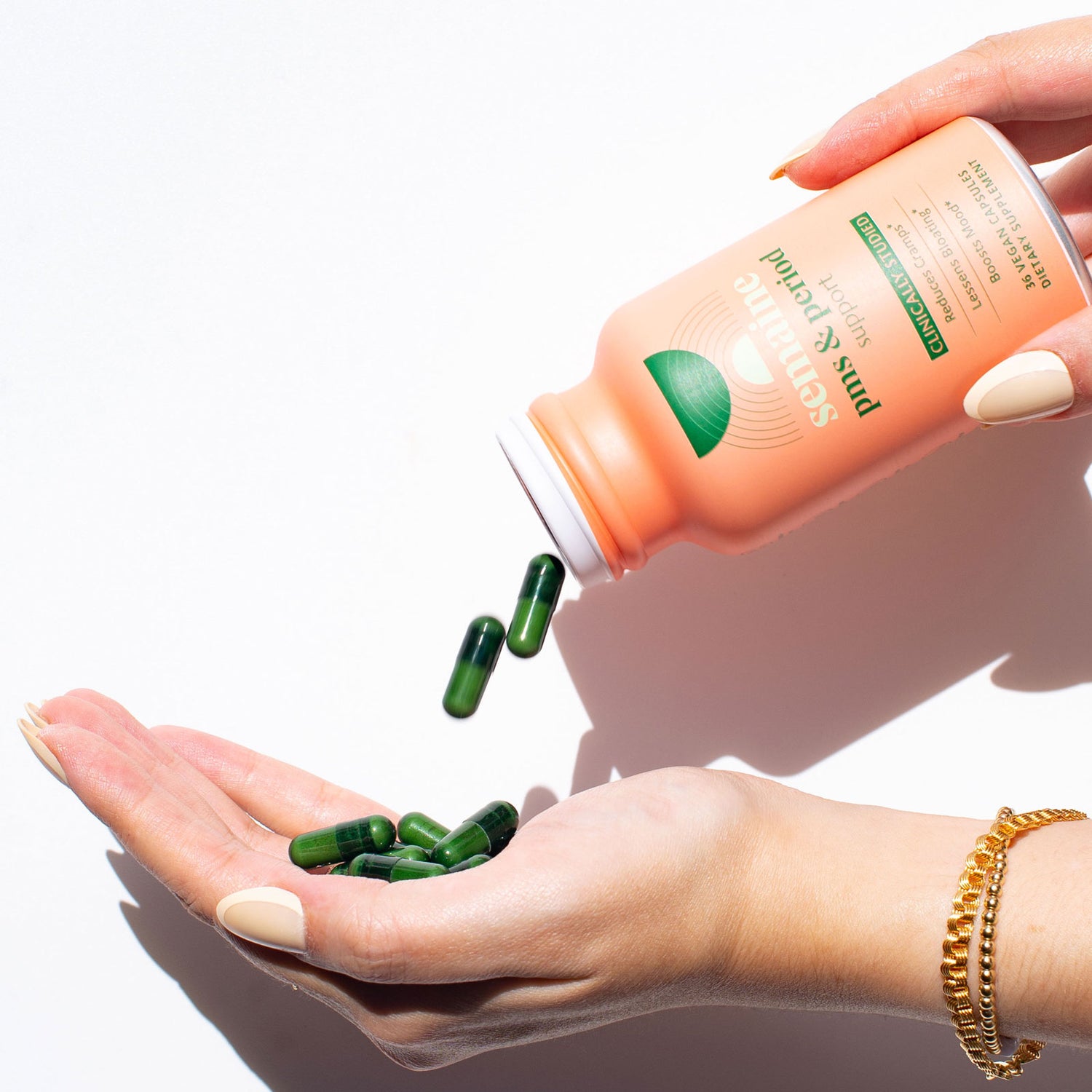What is the connection between food, inflammation and period pain? The food we eat gives us energy, powers our body, and helps us rebuild our cells. And because food is so central to how our bodies work, food affects everything from our moods, to our sleep, to inflammation and pain.
Unfortunately we’ve adopted an agricultural system that promotes foods that promote long-term inflammation. The focus on producing lots of calories, as cheaply as possible made sense a hundred years ago, but now it means that instead of nourishing us, our food can actually hurt us. The high calorie, processed food that we’ve adopted in our modern diets leads to higher levels of chronic inflammation. This is one reason why many people with painful periods have found relief by changing their diets (for inspiration see here, and here).
Some of the biggest changes have come in how we process food. Our goal for the past hundred years has been on making food that lasts longer, and so we grid up all the raw ingredients and strip out anything (including lots and lots of nutrients) that could make it spoil faster. And this works great which is why every zombie apocalypse always features plenty of miracle Twinkies that are still fresh. But, grinding up and stripping out nutrients and fiber changes our food in ways that end up stressing our bodies and confusing our hormones.
For example, one of the biggest changes to our food over the past few hundred years is how much fiber we consume. Fiber is one of those one of those miracle foods that makes us healthier in almost every way, protecting us from everything from heart disease to breast cancer. Most of us don’t get the recommended amount of fiber in our diets, and even if we do, there is a lot of evidence that even that might be too little. Fiber slows down how we process foods and how quickly we can get to all the exciting sugar and nutrients, so it helps even out our insulin levels.
The rise and crash of blood sugar (think the sugar highs you might experience after Halloween as a kid) eventually takes a toll on your body. Consuming food that causes your body to experience massive spikes in blood sugar is stressful, and makes it more likely that you’ll suffer from chronic inflammation.
Fortunately, there are some easy lifestyle tweaks you can do to help your body heal and have your best periods.

Some practical tips on what to eat to lower period pain
Eat fruit, don’t drink it: The fibre in fruit helps slow down how your body absorbs the sugar in fruit, which makes it a LOT easier on your body. If you take a few oranges and eat them, that is far far far easier on your body than the same oranges just smashed to pieces and turned into juice.
Fill up on some fiber: Fiber is really one of those miracle dietary ingredients that seems to help us with almost everything, from processing estrogen to feeding your microbiome and lowering inflammation. After your liver processes estrogen from your blood, it sends it through the bile duct to your intestine. Fiber helps absorb this estrogen and then carry it out of your body to get rid of it. Fiber also helps feed all the good microbes in your intestines.
Flee from fructose: You’d think that sugar is sugar, but actually not all sugar is created equal when it comes to impacting inflammation. The same amount of fructose in a drink actually raises inflammatory markers in your blood more than the equivalent amount of glucose (here’s the research paper). This is because glucose can be metabolized by all cells, but fructose can only be processed in the liver – so a large dose of fructose puts extra stress on your body. And this is a big reason that high-fructose corn syrup increases chronic inflammation.
Nosh on some nuts: One of the recurring themes of nutrition studies is that nuts are really really healthy for you, for a few different reasons. They are full of healthy fats that are great for you (hello omega-3 and alpha lipoic acid), they have a lot of nutrients (magnesium and zinc for example) that you might not get elsewhere. Plus, they tend to be higher in fiber which is great all around for us.
Look up the glycemic load: This is a bit boring, but take a look at a chart that tells you the glycemic load of foods. The glycemic load and glycemic index are often confused (we do it a lot too), but the glycemic load is more important. The glycemic load tells you how much a food will affect your blood sugar and the glycemic index tells you how quickly a food will affect your blood sugar. And the glycemic load is far more important – the smaller the number, the better it is for you. You can think of the glycemic index load as the size of the car that hits you – you’d much rather get bumped into by a toddler in their toy car than somebody driving a tank.
Curious, and interested in more articles that talk about how your body works? Or just want some simple tips to help you understand what else you can do to reduce period pain? Check out other Science & Lifestyle articles.


